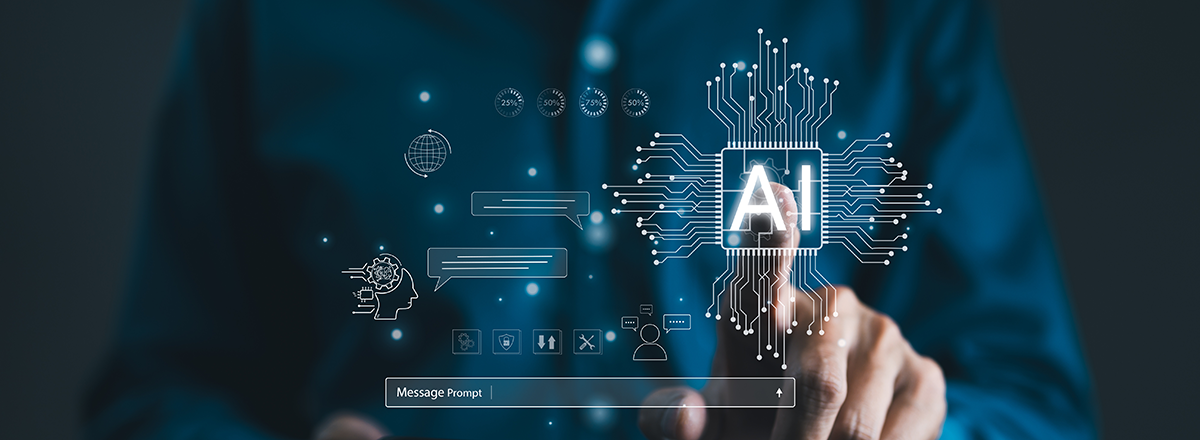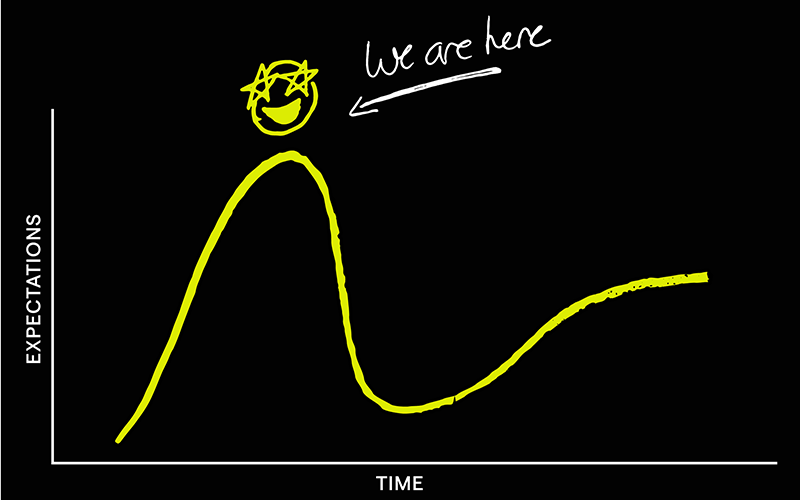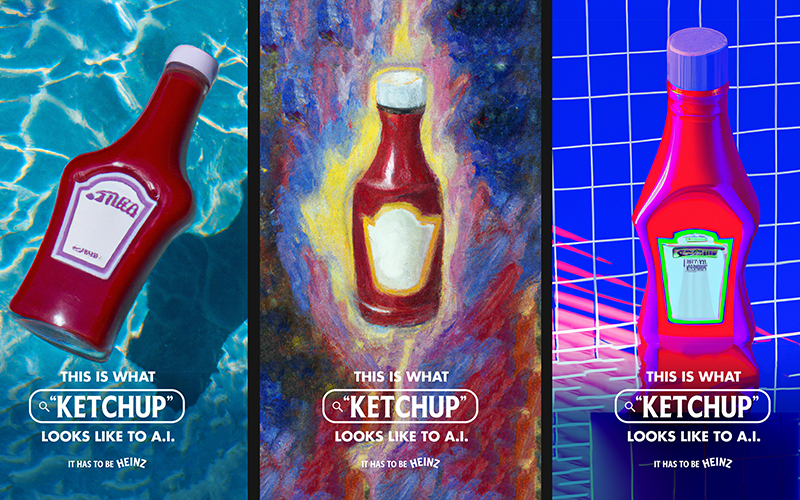
How to Open doors (and Build Restraints) With Generative AI
Alyson PayneArtificial intelligence is a moving target. Over the years, technology has become a constant companion in our work and leisure and its ever-changing nature has the ability to inspire or even mystify. Today, the expansion of AI is accelerating in such a way that following its evolution is like discovering a new microorganism in the ocean and then watching it walk out of the water on two legs before you’re able to journal your findings. We’ve reached peak mystification.
The term AI covers everything from process automation (like your thermostat adjusting its settings to save energy) to generative content (asking a chatbot to write a grocery list for the week). As a Design Lead at Studio Science, I’ve been exploring the new territory of generative AI and its use for design and innovation, and a few key opportunities have become clear.
A quick PSA before we dive in: as I said, the rate at which technology evolves is increasing. This means that what we talk about today might not be what we talk about tomorrow, and that’s OK. In this area of interest, mindset rules over memorization, and embracing adaptability is key.
Before we explore the possibilities ahead, it’s important to start with a level-setting of generative AI’s place in your organization.
AI is a Tool, Not THE Tool
Because we’re dealing with an environment of change, you shouldn’t rush to replace your previous strategies and tools with AI solutions. Embracing new technology doesn’t mean abandoning the old. As they say, don’t throw the baby out with the bath water.
Generative AI’s place right now should be one where you iterate and experiment and see where it could fit into your existing processes. We’re still in the early stages of the Hype Cycle; it would be shortsighted to completely reinvent your processes around it at this stage. A successful AI strategy still requires structure and a roadmap for how it is used in conjunction with your other technologies.

Stay invested in your teams and their ability to craft a compelling point of view. Generative AI is a powerful tool for generating content, but your team will help you to find your “why.” From there, AI provides an additional path to success, not the only path to success.
Finally, just because a generative AI tool can create something doesn’t mean you should make it happen. Just as you wouldn’t recreate a competitor’s image with your logo on it, pay attention to your references when asking AI to create content for you. Shiny new creative that doesn’t align with your brand and looks suspiciously like an “award-winning” campaign won’t serve you the long-term wins you’re looking for and are not worth the blowback you will receive.
Opening The Door
Now that the stipulations are covered, how and why should you be dabbling in generative AI? And dabble you must – taking a wait and see approach will only create a steeper hill for your organization to climb. Let’s begin with the biggest current benefits of AI which are its potential to enhance your speed and broaden your view.
Generative AI tools can be incredibly useful in the early phases of creative ideation. Midjourney, ChaptGPT, and others provide a method for teams to iterate and test ideas, brainstorm and gain inspiration, and organize thoughts. Approaching generative AI with an experimental mindset is a way to engineer surprise into your process. Embracing these left turns will drive innovative thinking. For example, Heinz was inspired to reimagine its Draw Ketchup campaign based on AI’s interpretation of tomato ketchup. What resulted took the audience on a memorable journey of discovery with multiple activations that transcended physical and digital.

I cannot stress enough that this doesn’t mean that you should stop collaborating with other people and getting input from stakeholders. But in a world where we work more asynchronously than ever with team members sometimes thousands of miles from each other, AI is a fantastic tool for simulating that collaboration and pushing ideas forward until you’re back in the company of humans. Figjam, a collaborative whiteboard space from the makers of Figma, uses Figjam AI, a service which generates prompts and templates to aid in the creation of tools like frameworks and brainstorming sessions. Gaining traction with tools quickly means more time focused on the big questions you need to unpack as a team.
Once you have identified the path you want to go down, AI is a way to deliver a high-fidelity output fast. For example, a study from MIT tested the productivity of business professionals using ChatGPT to write business documents. The participants using AI delivered content faster with high scores of quality and interestingly, the tool seemed to reduce skill inequalities. When gathering diverse perspectives to contribute to a problem, closing gaps in technical skills builds confidence which is essential for productive collaboration.
These tools are raising the ceiling for what the average brand can create. What previously could only be accomplished by enterprise companies with massive teams can now be mimicked by smaller and more niche brands looking to stand out. Because of this, taking a thoughtful approach and telling a compelling, ownable story is more important than ever.
What’s Next
AI is already embedded in many technologies we’ve been using for years, oftentimes inconspicuously. Now that generative AI has taken center stage, a healthy amount of skepticism and hesitation is a good thing but there’s no reason to be afraid of it. Just have a clear and strong process and guidelines around it, as you would any technology. If you’re using AI correctly, you won’t be able to tell it’s AI. But like spammy emails, it’s very clear when done poorly.
Remember, the ability to connect with someone on a human level and create content that resonates and lasts is still the Holy Grail of design. However you get there, make sure it aligns with your brand and provides a positive impact on your audiences.

Alyson Payne
Alyson is a visual communication design lead focused on leveraging brands to create impactful experiences for our clients and their customers.


